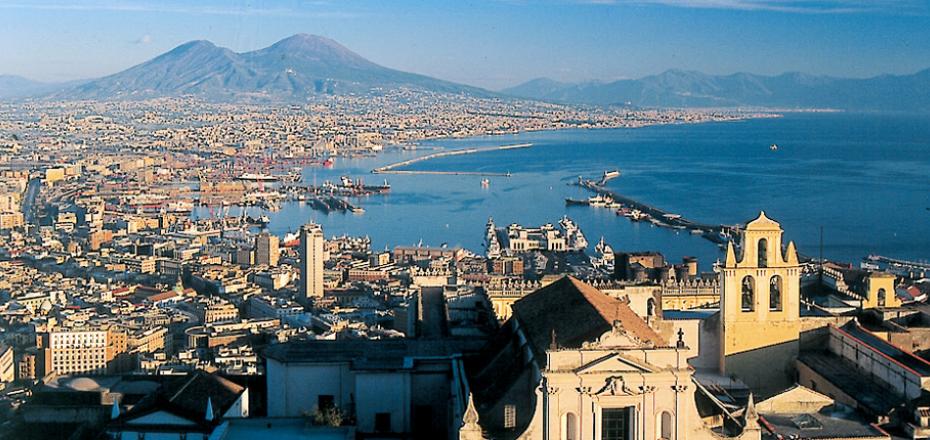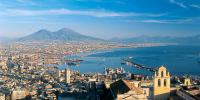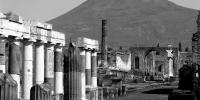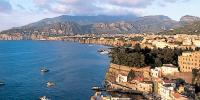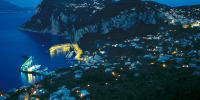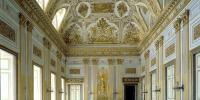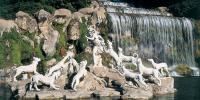- Italiano
- English
- 中文
LONG TOUR CLASSIC ITINERARY
Day 1 Departure to ITALY, MILAN (D)
Meeting at international airport and take the flight to Milan. At arrival, the car drives you to the restaurant for dinner, then transfer to the hotel and overnight staying in Rome.
Day 2 MILAN (B,L,D)
After breakfast at the hotel, start the visit of Milan and its famous attractions:
-The Duomo Cathedral, the world’s second Gothic cathedral, and symbol of the city.
-Vittorio Emmanuel II Gallery, one of the most beautiful promenades in Europe. On both side of the promenade we can mostly find gold and silver jewelries, clothing, watches and gift shops.
-The Scala Opera House, built in 1381, this three-storey building is Italy’s largest opera House, and is also known as “the world’s temple of opera”.
-The Sforza Castle, built in 1450 and completed in 1466, is one of Milan's most majestic non-religious buildings from the Renaissance. Today is a museum.
-The Peace Arch, built in 1815 and completed in 1838, commemorates the victory of Napoleon's expedition.
-The Five Days Square, which commemorates Milan people’s rebellion against Austrian invaders on March 18-22 1848.
After dinner, return to the hotel and overnight staying in Milan.
Day 3 MILAN- VERONA- VENICE (B,L,D)
After breakfast, visit the Santa Maria delle Grazie monastery and the Da Vinci's “Last Supper”; after the visit, transfer to Verona, hometown of Juliet and Romeo. At arrival, visit to Juliet’s House, a three-level medieval courtyard building, still saved considerably intact. Then, visit the city’s largest square, Bra Square, an irregular triangle shaped square, where you can find exquisite gardens and fountains, and the statue of Emmanuel II. In the evening transfer to Venice, dinner and hotel check-in.
Day 4 VENICE-FLORENCE (B,L,D)
After breakfast at the hotel, start the visit of Venice and its famous attractions:
-St. Mark’s Square, the most famous square of Venice, once praised by Napoleon as “Europe’s most beautiful salon”.
-St. Mark’s Church, a symbol of the magnificence of Venice, and one of the most famous churches in Italy.
-The Bell Tower, a very beautiful tower, located in St. Mark's Square, with its 98.6 meters of height is one of symbols of Venice.
-The Clock Tower, situated on the right side of St. Mark’s Church, was built by the famous architect Mauro Codussi during Venetian Renaissance.
-The Bridge of Sighs, built in 1603, is a white marble bridge, once used to transport the prisoners from Court to Prison, but now considered the sacred place for young lovers seeking for long-lasting love.
-The Golden Palace (Ca’ D’Oro), built in 1420, is a gold decorated building in Gothic architecture style, and is Venice’s most beautiful one.
-The Venice famous crystal glass factory.
Finally, transfer to Florence, dinner in and overnight staying in Florence.
Day 5 FLORENCE-PISA-FLORENCE (B,L,D)
After breakfast at the hotel, transfer to Pisa to visit its famous attractions:
-The Miracle Square, that embodies the essence of the City. Realized in 1152 AD, in 1987 was included by UNESCO in the “World Heritage List”.
-The Cathedral of St. Mary of the Assumption (Cattedrale di Santa Maria Assunta), started in 1063 and completed in 1125, whose style clearly shows Byzantine influences. -The Leaning Tower of Pisa, the world-famous scenic spot and historic building, is also the pride of Pisan citizens.
After lunch, return to Florence to visit:
-the Cathedral of Saint Mary of the Flower, the best of all constructions in Florence, built in 1294 and completed in 1463, its architecture and sculptures simply cannot be missed. -the Giotto’s Bell Tower, located on the right side of the Cathedral of Saint Mary of the Flower, is the posthumous work of Giotto, “the father of European painting”.
After dinner, return to the hotel to rest. Overnight staying in Florence.
Day 6 FLORENCE- ROME (B,L,D)
After breakfast, continues the tour of Florence:
-The Uffizi Museum, one of the largest museums in Italy and one of the largest art museums in the world. It collects many important works and representative works which shows to the world the whole picture of Renaissance art’s achievements.
-Dante’s House, now museum of Dante, is located in a small street. In this three-storey building, each storey is respectively dedicated to the youth, middle age and old age period of Dante. After lunch, transfer to the capital of Italy: Rome.
Visit St. Peter’s Basilica where it is said that Jesus old apostle, Saint Peter, died and St. Peter's Square, built in 1667, is the masterpiece of the famous master artist Bernini.
After dinner, check - in at the hotel and overnight staying in Rome.
Day 7 ROME- NAPLES (B,L,D)
After breakfast, continue the tour of Rome attractions:
-Colosseum, this huge ancient Rome’s amphitheater, records the history of the sad struggle between man and beast.
-Triumphal Arch, built in order to commemorate Constantine’s victory in the Battle of Milvian Bridge.
-Venice square, also known as the “motherland altar”, is the site of the various national celebrations held in Italy.
-Trevi Fountain, completed between 1730 and 1762, is the source of the Baroque style. It is another Bernini’s masterpiece, showing a shaped portrait of victorius Poseidon.
–Pantheon, here were buried some great Italian artists, the most famous of them is Raphael. After dinner, transfer and overnight staying in Naples.
Day 8 NAPLES POMPEI- SORRENTO-CAPRI-NAPLES (B,L,D)
After breakfast, visit the ancient city of Pompei: Before being engulfed by the Volcano, this ancient city already counted more than 700 years of history. It was discovered during the 18th century’s huge large-scale excavations, and is now one of the main spots in Naples. Then, the tour continues to Sorrento, a small town on the Gulf of Naples, where you can both find a winding seacoast and a marvelous blue sea. In addition to this, it’s also the hometown of Renaissance’s poet Tasso.
The last spot is Capri: here is the famous tourist resort in Naples, from 29 BC was considered by ancestors the original Holy Land. After the visit, return to Naples for dinner and overnight staying.
Day 9 NAPLES – CASERTA – ROME (B,L,D)
After breakfast, start visiting Naples Historic Area, in 1995 listed by UNESCO in the "World Heritage List". Among its architectural styles you can find: Romanesque , Gothic, Renaissance, Baroque, Classical and a modern style. After lunch, travel to Caserta to visit its main attraction: the Caserta Royal Palace, created by the Bourbon king Charles III in the mid-18th century to compete with the magnificence of Versailles and the Royal Palace in Madrid. At the end of the visit, transfer to Rome for dinner and overnight staying.
Day 10 ITALY/CHINA (B)
After breakfast, a brief rest and then transfer to the International Rome Airport and fly back home.
We wish you a pleasant journey!

